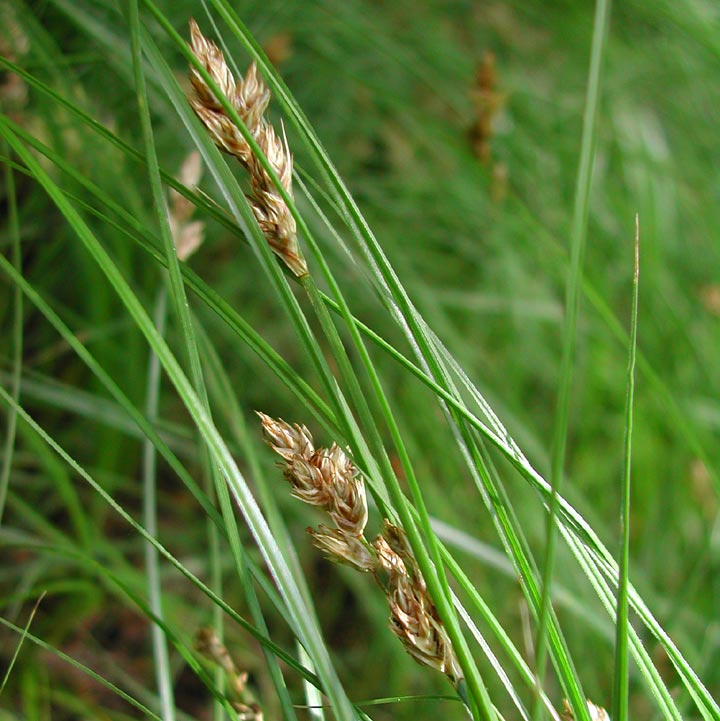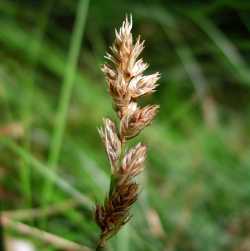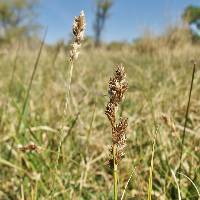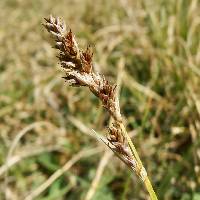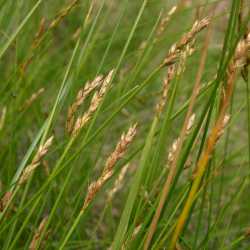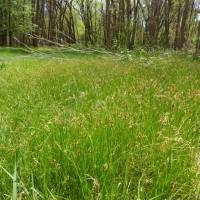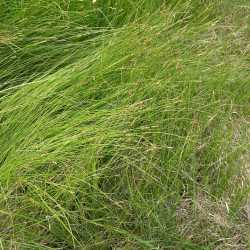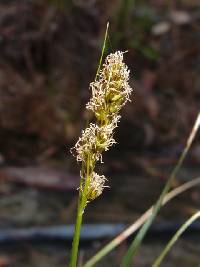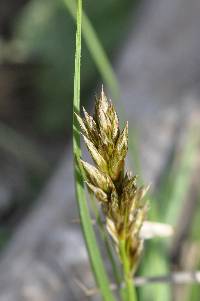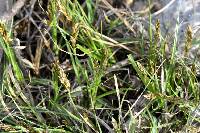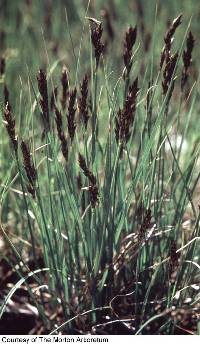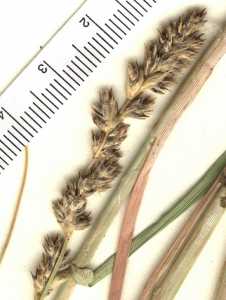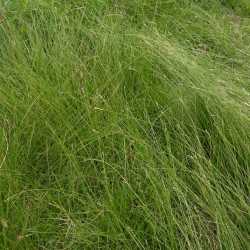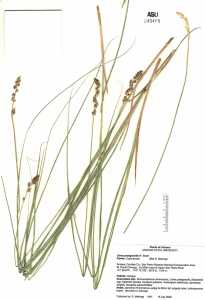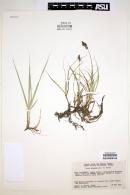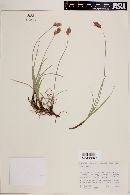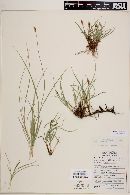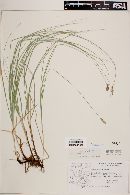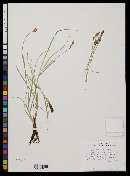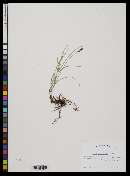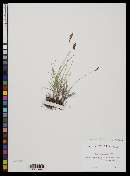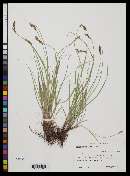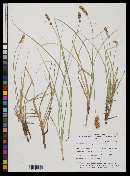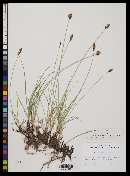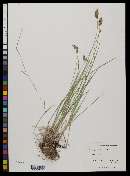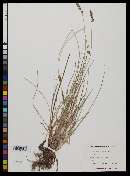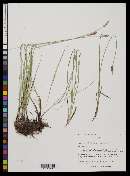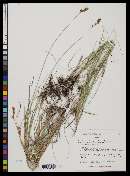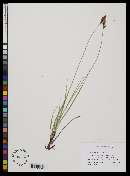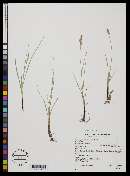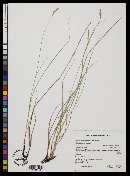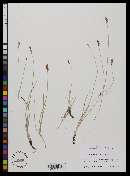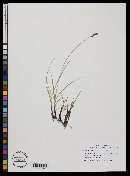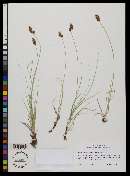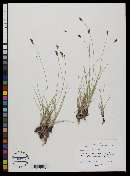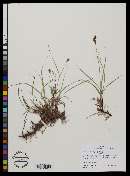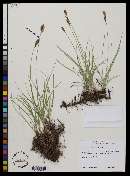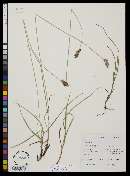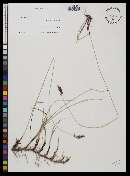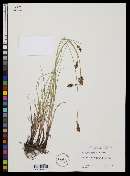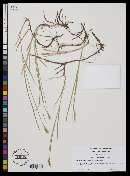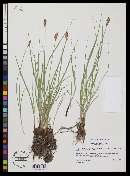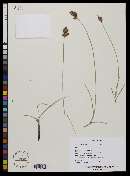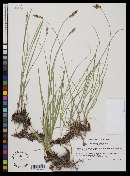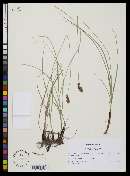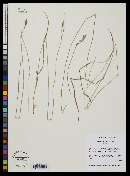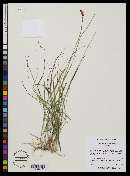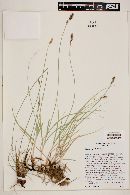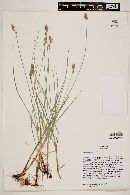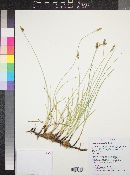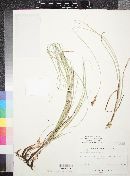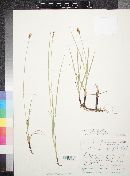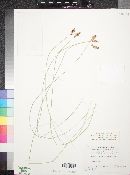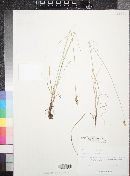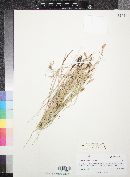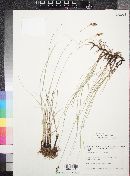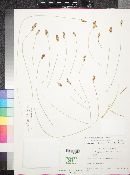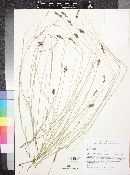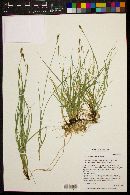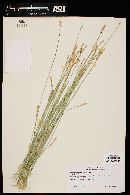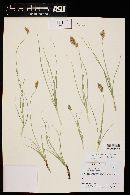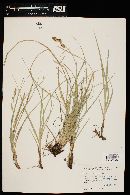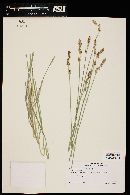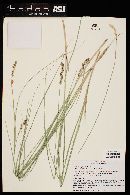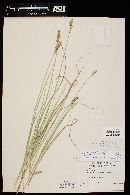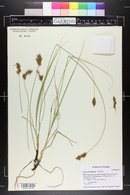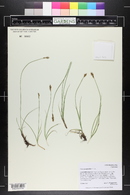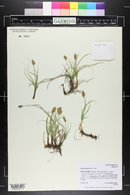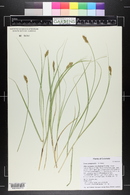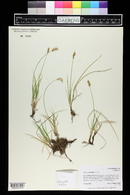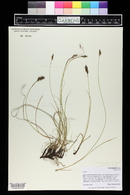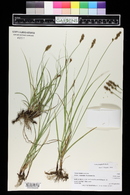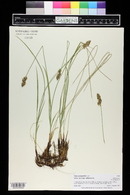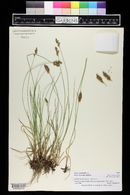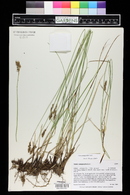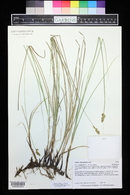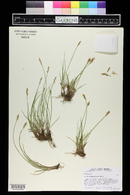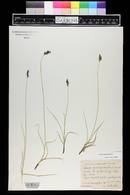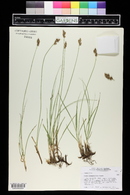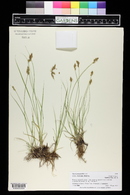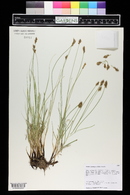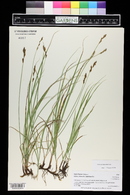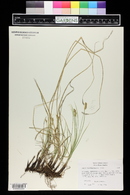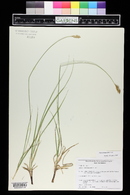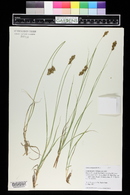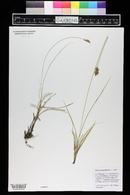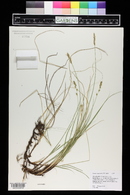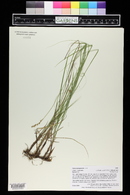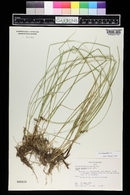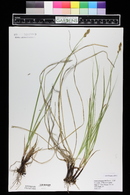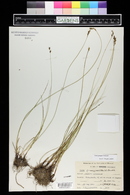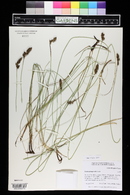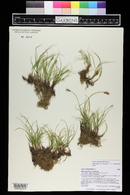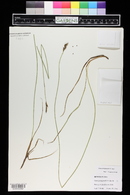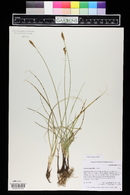Carex praegracilis
|
|
|
|
Family: Cyperaceae
Clustered Field Sedge, more...Blackcreeper Sedge, slim sedge
[Carex camporum Mackenzie, moreCarex marcida J.F. Gmel., Carex marcida var. alterna L.H.Bailey, Carex marcida var. debilis , Carex sartwellii var. occidentalis L.H.Bailey] |
Rhizomes coarse, 1.8-3 mm thick, typically with long, unbranched segments from which shoots arise singly every few nodes. Culms sharply trigonous, (10-)25-80(-100) cm, scabrous-angled distally. Leaves: basal sheaths dark brown to nearly black; sheaths with hyaline inner band, apex not prolonged, glabrous; ligules 0.6-2.6 mm; blades 1-3(-3.5) mm wide. Inflorescences elongate, 0.9-4 cm; spikes 5-18(-25), usually unisexual; staminate spikes lanceoloid; pistillate spikes ovoid. Pistillate scales straw colored to pale reddish brown, with hyaline margins, ovate, apex acute to acuminate-awned, dull to ± satiny. Anthers (1.8-)2.2-3.9 mm, apiculus bristly hairy (30X). Perigynia brown to nearly black at maturity, essentially veinless, usually stipitate, ovate, plano-convex, (2.2-)2.6-3.7 × 1.2-1.9 mm, dull; beak 0.7-1.2 mm, 1/4-1/2 length of body, apex ± hyaline, obscurely bidentate. Fruiting May-Aug. Wet to seasonally dry meadows, prairies, stream banks, lakeshores, springheads and seeps, openings in woodlands, ditches, roadsides, tolerant of alkaline soils; 0-3400 m; Alta., B.C., Man., Ont., Que., Sask., Yukon; Alaska, Ariz., Calif., Colo., Idaho, Ill., Ind., Iowa, Kans., Ky., Maine, Mich., Minn., Mo., Mont., Nebr., Nev., N.Mex., N.Y., N.Dak., Ohio, Oreg., Pa., S.Dak., Utah, Vt., Va., Wash., Wis., Wyo.; Mexico. Carex praegracilis is extensively and recently spreading east of its native range, especially along expressways to which road salt is applied in winter (A. A. Reznicek and P. M. Catling 1987).
FNA 2002, Cronquist et al. 1977 Common Name: clustered field sedge Duration: Perennial Nativity: Native Lifeform: Graminoid General: Singly arising from coarse rhizomes 1.8-3 mm thick, with unbranched segments, old sheaths dark like the rhizomes, stems sharply three sided 25-80 cm tall, scabrous angled near tip. Vegetative: Basal sheaths dark brown to black, glabrous, with ligules 0.6-2.6 mm, blades 1-3 mm wide, firm, all borne at or near the base, flat. Inflorescence: Elongate with 5-25 spikes, usually unisexual with lanceoloid staminate spikes, pistillate spikes ovoid, aggregated into a thick cylindric to more or less elliptic or ovoid head 1.5-3.5 cm long and about 1 cm wide; pistillate scales straw colored to pale reddish brown with hyaline margins, ovate, apex acute to acuminate awned, all equaling or surpassing but generally concealing perigynia; perigynia brown to nearly black at maturity, ovate or lance-ovate to elliptic, short-stipitate, plan0-convex, 2.6-3.7 mm long by 1.2-1.9 mm wide, dull, with beak prominent, 0.6-1.3 mm, quarter to half length of body, hyaline at tip; achene lenticular 1.2-1.7 mm long. Ecology: Found on open, moist soils, often alkaline, along stream banks, lake shores, and in wet to seasonally dry meadows from 3,000-9,500 ft (914-2896 m); flowers May-August. Distribution: Most of N. Amer., in every state in the US except TX east to MD and south to FL; also in all of MEX south to northern S. Amer. Notes: This is a strongly rhizomatous species with very dark stem bases, compared to the lighter bases of Carex siccata. It prefers seasonally wet or alkaline habitats, while Carex siccata is a plant of dry meadows and forests. Robust specimens can have inflorescences approaching those of Carex chihuahuensis, sharing paniculate lower branches and dark stem bases. However, the spikes are more often unisexual in Carex praegracilis, and the perigynia are usually un-veined, while C. chihuahuensis has androgynous spikes and more strongly veined perigynia. (Notes: Max Licher and Glenn Rink 2012) Ethnobotany: Unknown Etymology: Carex is the classical Latin name for the genus, while praegracilis comes from Latin prae meaning before and front, and gracilis for slender. Synonyms: Carex camporum Editor: SBuckley 2010, FSCoburn 2015 Stems (1-)3-7 dm, scaberulous on the angles above, scattered on long, stout, black or brownish-black, monopodial rhizomes; lvs basally disposed, ±elongate, ±flat, mostly 1-3 mm wide; spikes mostly 6-25, androgynous or some of them wholly pistillate (often some plants largely pistillate and others largely staminate), sessile, inconspicuously bracteate, less than 1 cm, aggregated into a thick-cylindric to ±ellipsoid or ovoid head 1.5-3.5(-5) cm; scales generally ±concealing the perigynia, these ±ovate or lance-ovate to elliptic, 2.9-3.9 mm, planoconvex, sharp-edged and ±serrulate distally, inconspicuously several-nerved dorsally, nerveless ventrally, with a prominent beak 0.6-1.3 mm; achene lenticular; 2n=60. Open, moist or wet, often alkaline places, chiefly on prairies; B.C. to Calif., e. to Io. and Minn., and intr. e. along salted highways to s. Que. and s. N.Y. Gleason, Henry A. & Cronquist, Arthur J. 1991. Manual of vascular plants of northeastern United States and adjacent Canada. lxxv + 910 pp. ©The New York Botanical Garden. All rights reserved. Used by permission. From Flora of Indiana (1940) by Charles C. Deam Indiana Coefficient of Conservatism: C = null, non-native Wetland Indicator Status: FACW |
|
|
|

